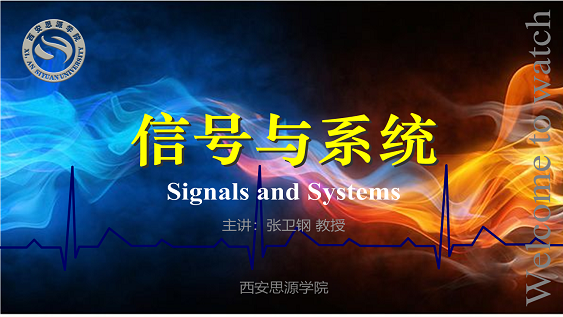
当前课程知识点:Production Engineering > Chapter 6 Sucker Rod Pumping(II) > 6.7 Design of Pumping System > 6.7.2 Design Procedures of Pumping System
返回《Production Engineering》慕课在线视频课程列表
返回《Production Engineering》慕课在线视频列表
同学们好
本节我们介绍有杆抽油井生产系统设计
首先我们看一下
有杆抽油系统它的系统组成
是由油层 井筒
机杆泵设备以及地面的输油管线
这四部分组成的
对于每一部分我们学习了
它相应的运动或者是流动的规律
比如从油层我们学习了供液的规律
也就是流动的IPR曲线
那么对于井筒和地面管线
我们学习了它的输送规律
也就是多相流动的规律
而对于机杆泵设备我们学习了
它的运动以及受力等方面的一些规律和方法
那么利用我们学习的这些知识
进行有杆抽油系统的设计
是需要设计哪些方面的内容呢
主要第一油井的流入动态的计算
第二是采油设备包括机杆泵
这些设备的选择
第三是抽汲参数
包括了冲程 冲次 泵径
下泵深度等等这些参数的确定
第四就是工况指标的预测
包括载荷 扭矩 功率等等这些方面
那么完成有杆抽系统的设计
目标就是挖掘油井的潜力 配产合理
使抽油设备工作在安全高效的条件下
从而达到比较好的经济效益
其中挖掘油井潜力和合理配产
是我们进行
抽油机系统设计的一个基本的前提
那么整个的设计方法分为两种
第一种叫做指定产量设计
指定产量设计是为了实现
油藏提供的配产的目标
而第二种方法称为最大产量设计
也就是根据油井的供液能力
尽量的实现它的最大产液的
以这样一个目标进行的设计
我们下面就来看有杆抽油系统
它的设计是由哪几个主要的步骤
首先是进行油井的产能的确定
也就是要得到这样的一条IPR曲线
这是整个设计的一个前提和基础
有了这条曲线之后
根据指定的产量
我们就可以得到相对应的流压
这里面我们介绍的设计的步骤
从这个角度我们就可以看到
是一种指定产量的设计
也就是根据配产的产量
依据IPR曲线
得到了相对应的井底流压
而这个井底流压
我们就可以继续在井筒当中
去看它的压力是如何变化的
这就要用到井筒当中的多相管流的计算
而多相管流的计算是需要知道
井筒的压力和温度的分布
这个地方给出来了温度的分布
那么以此我们从下往上做多相管流的计算
计算的目的是为了确定合适的下泵深度
而下泵深度的获得是依据泵的沉没度
或者是沉没压力的
也就是以井底流压为起点
再向上计算的过程中
压力是逐渐降低的
那么低到什么程度
我们就需要下泵了呢
根据我们的学习我们知道
油层的性质不同
我们确定下泵深度的原则是不一样
我们选择一个合适的井(泵)口的压力
来确定下泵深度
得到了下泵深度之后继续向上
做一段净油柱的计算
我们就得到了液面
这个地方我们称为动液面
动液面的获得是结合
或者是考虑了井口的套压确定的
这是一个方面
从另外一个角度来说从井口的条件之下
我们需要这口井实现一个指定的井口压力
也叫井口的油压
那么井口油压确定
而产量也知道的时候我们要再做
第二次多相管流的计算
计算的方向是由上到下做计算
一直算到我们确定的下泵深度这个位置
计算的结果是得到了泵的出口的压力
也就是在这个位置上有这个出口压力
可以使得产量顺利地流动到地面
完成井口压力的这样一个目标
这就得到了一个井(泵)口的入口压力
和排出口压力是由泵来实现的
一个增压的范围
以上的这个过程我们在计算过程当中
从IPR曲线到井口压力的计算
那么整个的一个过程
是我们有杆抽系统设计的第一大部分
得到了下泵深度我们要做的
就是要确定泵径 冲程和冲次
当然这个地方的确定是一个初步的确定
而且这种确定的方式或者是它的选择
是有多种的
我们再继续向下
来进行抽油杆柱的设计
下泵深度确定了
由井口到下泵位置是需要杆柱连接的
而杆柱是有强度的要求的
所以通过杆柱的设计
得到了不同杆柱的组合
在安全条件下的一个杆柱组合
接下来的一步就要进行泵效的分析
杆柱的设计我们可以来确定冲程损失的大小
而对于泵的入口的条件分析
我们可以得到气体影响这样一个方面
所以我们综合起来得到一个泵效分析的结果
而泵效的分析就能够实现一个
这口井它实际能够实现的产量大小
那么实际实现的产量大小
跟我们前面指定的产量不一致
怎么办呢
需要进行的就是产量的迭代计算
在这个迭代计算过程中
我们需要确定
再在进一步的确定泵径
冲程和冲次合适的一种组合形式
直到产量迭代完成
所谓的迭代完成
指的就是通过泵效计算的产量
跟我们指定的产量是接近的
得到了这样一个目标之后
下面要做的就是工况指标的计算
也就是计算它的最大最小载荷
计算减速箱的扭矩
计算电机的功率
依据这样的一些指标我们去选择
合适的抽油机
合适的减速箱以及电机
这就是我们以上介绍了基本的
有杆抽油系统的设计的步骤
这就是本节我们介绍的主要内容
同学们再见
-1.1 Main Tasks of Production Engineering
--1.1 Main Tasks of Production Engineering
-1.2 Flow in Production System
--1.2 Flow in Production System
-Problems
--Chapter 1 - Problems
-2.1 IPR Curve and Well Productivity
--2.1.1 Single-Phase Oil Inflow Performance Relationships
-2.2 Vogel's IPR and Applications
--2.2.2 Determination of IPR Curves Using Vogel's Equation
--2.2.3 Skin Factor and Flow Efficiency
--2.2.4 Extension of Vogel's Equation for Non-Complete Wells
--2.2.5 Combination Single-Phase Liquid and Two-Phase Flow
-Problems
--Chapter 2--Problems
-3.1 Two-Phase Flow in Wellbore
--3.1.1 Flow Regimes in Vertical Flow
-3.2 Two-Phase Vertical Flow Pressure Gradient Models
--3.2.1 Two-Phase Pressure Gradient Equations
--3.2.2 Predicting Gas-Liquid Flow Regimes Using the Okiszewski Correlation
--3.2.3 Pressure Gradient Calculation Using the Okiszewski Correlation
-3.3 Vertical Lift Performance
--3.3 Vertical Lift Performance
-Problems
--Chapter 3--Problems
-4.1 Nodal Analysis Approach
--4.1.2 Solution Node at Bottom of Well
--4.1.3 Solution Node at Wellhead
-4.2 Flow through Chokes
--4.2.2 Solution Node at Choke
-Problems
--Chapter 4--Problems
-5.1 Principles of Gas Lift
--5.1.2 Initial Kick-off of Gas Lift
-5.2 Gas Lift Valves and Gas Lift Completions
-5.3 Gas Lift Design
--5.3.1 Gas Lift Design for Specific Production Rate
--5.3.2 Gas Lift Design for Specific Injection Rate
--5.3.3 Kick-off Procedure with Unloading Valves
--5.3.4 Design Depths of Unloading Valves
-Problems
--Chapter 5--Problems
-6.1 Introduction of Surface and Downhole Equipment
-6.2 Operating Principle of Sucker Rod Pumps
-6.3 Pumping Unit Kinematics
--6.3.1 Motion of Polished Rod-Simple Harmonic Motion
--6.3.2 Motion of Polished Rod-Crank and Pitman Motion
-6.4 Polished Rod Load
--6.4.3 Peak Polished Rod Load and Minimum Polished Rod Load
-Problems
--Problems for chapter 6: Sucker Rod pumping I
-6.5 Calculation of Counterbalancing, Torque and Power
--6.5.1 Balance of Pumping Unit
--6.5.2 Counterbalancing Calculation
--6.5.3 Torque and Torque Factor
-6.6 Volumetric Efficiency of Pump
--6.6.2 Gas Effect on Pump Performance
--6.6.3 Measures of Enhancing Pump Volumetric Efficiency
-6.7 Design of Pumping System
--6.7.1 Strength Calculation and Design of Sucker Rod Strings
--6.7.2 Design Procedures of Pumping System
-6.8 Analysis of Sucker Rod Pumping Well Conditions
--6.8.1 Acoustic Surveys and Analysis of Annular Liquid Levels
--6.8.2 Introduction of Dynamometer Card
--6.8.3 Typical Dynamometer Cards
-Problems
--Problems: Chapter 6: Sucker Rod Pumping (II)
-7.1 Water Injection System
--7.1.1 Water Resources and Water Treatment
--7.1.2 Introduction of Water Injection System
-7.2 Injectivity Analysis
--7.2.1 Injectivity and Injectivity Index Curves
-7.3 Injection Tubing String
--7.3 Introduction of Injection Tubing Strings
-7.4 Analysis and Application of Injectivity Index Curves
--7.4.1 Analysis of Injectivity Index Curves
--7.4.2 Injection Choke Deployment
-Problems
--Chapter 7--Problems
-8.0 Introduction
-8.1 The Fracturing of Reservoir Rock
--8.1.1 Basic Rock Mechanics Parameters
--8.1.4 Fracture Initiation Conditions
-Problems
--Chapter 8(I)--Problems
-8.2 Fracturing Fluids
--8.2.2 Fluid-Loss Properties of Fracturing Fluids
--8.2.3 Rheological Properties of Fracturing Fluids
-8.3 Proppants
-8.4 Hydraulic Fracturing Design
--8.4.1 Productivity Index of Hydraulic Fracturing Wells
--8.4.2 Fracture Geometry Models
--8.4.3 Design Procedure for Hydraulic Fracturing
-Problems
--Chapter 8(II)--Problems
-9.0 Introduction
-9.1 Carbonate Acidizing
--9.1.1 Mechanism of Carbonate Acidizing
--9.1.2 Effect Factors of Reaction Rate
--9.1.4 Effective Distance of Live Acid
-9.2 Sandstone Acidizing
--9.2.1 Mechanism of Sandstone Acidizing
--9.2.2 Mud Acid Treatment Design
-9.3 Acidizing Treatment Technologies
--9.3.2 Acidizing Treatment Operations
-Problems
--Chapter 9--Problems
-Final Exam
